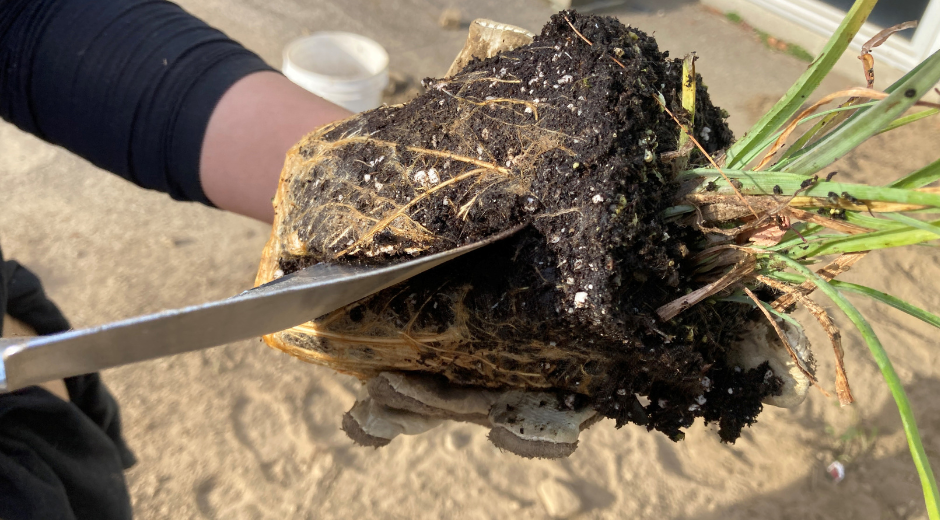FirstEnergy Green Team Encourages Perfect Attendance for Pollinators with New Garden Behind School
Just five minutes after FirstEnergy Environmental Scientist Jessica Shaffer planted a small shrub behind Belle Vernon Middle School in western Pennsylvania, the new pollinator garden welcomed its first visitor.
“Look at that skipper taking a drink of the catmint,” she exclaimed as a fuzzy brown moth perched among newly planted purple blossoms.
On a recent October afternoon, Shaffer and several members of FirstEnergy’s Green Team spent three hours planting 36 native Pennsylvania plants in a plot prepared by the school, using fresh topsoil over flattened cardboard sheets—an effective weed block. These volunteers dedicate their time to various environmental initiatives, including park cleanups and tree-planting events.
Many pollinator populations are in decline due to loss of feeding and nesting habitats, according to the Pollinator Partnership, a nonprofit focused on protecting pollinators and their ecosystems.
The volunteers planted diverse species like bee balm, Starfire phlox, coneflower, catmint and false sunflower to attract pollinators—such as butterflies, bees, birds, beetles, flies and moths—that rely on nectar and seeds for survival.
FirstEnergy provided the native plants for the middle school’s garden, which the students are expected to tend as it grows. Located next to raised vegetable beds and a greenhouse used by after-school clubs, the garden represents a long-term investment in the environment and the community.
“We planted perennial plants, and they’re more expensive than annuals,” Shaffer noted. “They start small but will return year after year and spread over time.”
Shaffer emphasized the importance of native plants, noting that many popular landscaping options with bright flowers originate from Asia and fail to support local pollinators.
“Our birds, butterflies and bees specialize in feeding on specific plants,” she explained. “If they can’t find them, they’ll die off, harming the ecosystem.”
Haroon Khalid, a substation engineer who stirred up dust while raking the open field, said he grew up in the Bronx in New York and isn't used to rural landscapes.
“I enjoy serving my local community, and what better way to do that than by being on the Green Team and providing visual learning opportunities for the students here?” he said.
Tips for healthy and vibrant pollinator gardens
Select and plant drought-tolerant native plants
Consider soil quality, sunlight, terrain and access to water
Weed often
Water regularly when dry
Deadhead to encourage new blooms
Put up a sign identifying the garden to notify landscapers not to trim or spray
Kalona Foster, an electric system designer who started work at FirstEnergy three months ago, said she values the opportunities her new employer provides for her to volunteer within her community.
“I like the idea of planting these gardens at places like schools and libraries,” she said. “I think it is really cool to create open spaces out in the community that everyone can enjoy.”
FirstEnergy’s Green Team in western Pennsylvania has planted other pollinator gardens at local community staples, including the Scottdale and Rostraver Township public libraries.
Learn more about FirstEnergy’s environmental and corporate responsibility efforts to build a brighter and more sustainable future at www.fecorporateresponsibility.com.

